When someone is trying to stop drinking, the body doesn’t just quit cold turkey-it fights back. Cravings, anxiety, sleeplessness, and intense urges can return weeks or even months after the last drink. That’s where medications for Alcohol Use Disorder (AUD) come in. They don’t cure addiction, but they can change the odds. For many, they’re the difference between staying sober and going back to drinking.
How AUD Medications Actually Work
There are three FDA-approved medications for AUD, each with a different job. They don’t make you feel better-they make drinking less appealing, less rewarding, or physically unpleasant.Naltrexone blocks the brain’s opioid receptors. When you drink, alcohol normally triggers a release of endorphins that make you feel good. Naltrexone stops that. It doesn’t stop you from drinking, but it takes the pleasure out of it. Studies show it cuts heavy drinking days by nearly 5 days a month. It’s especially helpful for people who drink to cope with stress or who get lost in binge episodes.
Acamprosate works on the brain’s chemistry after withdrawal. Alcohol messes with GABA and glutamate, two key neurotransmitters. After stopping, your brain stays out of balance for weeks. Acamprosate helps restore that balance. It’s not a quick fix-it takes days to build up in your system. But if you’ve been sober for a few days, it can reduce the constant, low-level anxiety that pushes people back to alcohol.
Disulfiram is the oldest and most extreme. It makes your body react badly to alcohol. If you drink while on it, you get a severe reaction: flushing, pounding heart, nausea, vomiting, even low blood pressure. It’s a deterrent. But it only works if you take it every day and avoid alcohol completely. One slip-up can land you in the ER.
There’s also gabapentin, not FDA-approved for AUD but widely used off-label. It’s especially helpful for people with a history of severe withdrawal or seizures. It calms the nervous system, reduces insomnia, and cuts cravings. In one trial, 45% of heavy drinkers with past withdrawal symptoms stayed sober on gabapentin, compared to just 28% on placebo.
Which Medication Is Right for You?
There’s no one-size-fits-all. The best choice depends on your drinking pattern, your health, and what you’re trying to achieve.- If you want to stop drinking completely and have already detoxed, acamprosate is your best bet.
- If you still drink sometimes but want to cut back on binges, naltrexone works better.
- If you’re highly motivated, understand the risks, and can commit to total abstinence, disulfiram can be powerful.
- If you have liver damage or a history of severe withdrawal, gabapentin is often safer and more effective.
A 2020 study by Dr. Raymond Anton found that matching the medication to your specific situation doubled your chances of success. For example, someone with frequent cravings and no liver issues might do well on naltrexone. Someone with anxiety after quitting and mild kidney problems might do better on acamprosate.
Why Most People Stop Taking These Medications
The data is clear: these drugs work. But only about 1 in 10 people with AUD ever get them. And of those who do, nearly two-thirds quit within three months.Here’s why:
- Side effects: Naltrexone can cause nausea (6.5% of users). Acamprosate causes diarrhea in over 10%. Gabapentin can make you drowsy.
- Timing: You can’t start acamprosate until you’ve been sober for 3-5 days. If you’re still drinking, you have to wait. That delay turns people away.
- Cost: Even with generics, naltrexone and acamprosate can cost $200-$400 a month. Disulfiram is cheap-$20 a month-but most insurance doesn’t cover it well.
- Stigma: Many people think taking a pill for alcohol addiction means they’re “not really sober.” They feel ashamed.
- Confusion: Doctors don’t always know how to prescribe these. Only 28% of primary care physicians feel trained to do it.
One woman in Halifax told her doctor she wanted help stopping drinking. He gave her a referral to a counselor but didn’t mention any medication. She tried on her own for six months. When she relapsed, she didn’t go back-she felt like she’d failed. She didn’t know naltrexone could have helped her cut back during her worst cravings.
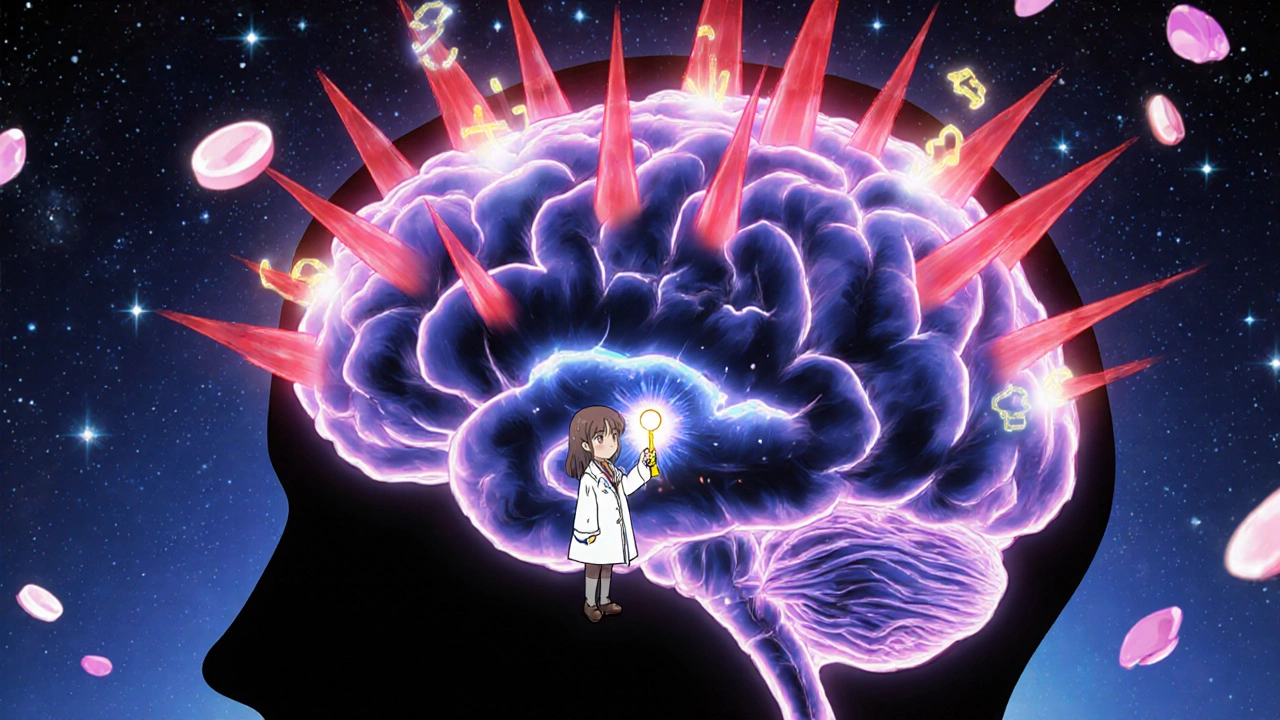
The Hidden Danger: Mixing Medications With Alcohol
This isn’t just about relapse-it’s about safety.Disulfiram and alcohol? A dangerous combo. Even a sip of beer can cause a life-threatening reaction. That’s why doctors require patients to sign a consent form before prescribing it.
Naltrexone and alcohol? Not deadly, but it can mask the effects of drinking. Some people think, “I took my pill, so I can drink more.” That’s a trap. Naltrexone doesn’t protect your liver. You can still develop cirrhosis, pancreatitis, or brain damage.
Acamprosate? It’s generally safe with alcohol, but it won’t work if you’re still drinking. It only helps after you’ve stopped.
Gabapentin is safer for people with liver disease, but mixing it with alcohol can make you extremely drowsy or dizzy. It increases the risk of falls and accidents.
The real risk isn’t the medication itself-it’s the belief that taking it means you’re “safe” to drink. You’re not.
What Works Better Than Medication Alone
Medications aren’t magic pills. They work best when paired with something else.The landmark COMBINE study showed that naltrexone + counseling worked better than naltrexone alone. Acamprosate + counseling worked better than acamprosate alone. But combining both medications? No extra benefit.
Behavioral therapy helps people learn to handle triggers, manage stress, and rebuild their lives without alcohol. It’s not just talking-it’s skill-building. Cognitive behavioral therapy (CBT), motivational interviewing, and contingency management have all been shown to improve outcomes.
And now, digital tools are helping. A 2023 study found that using a smartphone app to track cravings and get real-time coping tips reduced relapse risk by 33%. These apps don’t replace meds-they support them.

What’s New in AUD Treatment
The field is changing fast.In 2022, the FDA approved a new version of acamprosate that reduces daily pills from six to two. That’s a big deal for people struggling with adherence.
Extended-release naltrexone implants (lasts 6 months) are in phase 2 trials. Early results show 78% adherence versus 42% with monthly shots. That’s huge.
Researchers are also looking at brain scans to predict who will respond to which drug. One study found that the integrity of white matter in the frontal lobe predicted acamprosate success with 68% accuracy. That means someday, we might choose your medication based on your brain, not just your history.
Other emerging options include ketamine infusions and gut microbiome treatments. One small 2023 trial used a mix of probiotics and anti-inflammatory compounds and cut heavy drinking days by 37%.
What You Can Do Right Now
If you or someone you know is struggling with AUD:- Don’t wait until you’re “ready.” Medication can help you get there.
- Ask your doctor about naltrexone or acamprosate. They’re safer and more effective than most people realize.
- If you have liver disease, ask about gabapentin. It’s often overlooked but can be life-saving.
- If you’re on disulfiram, never drink-even one drink can be dangerous.
- Pair medication with counseling, support groups, or a digital app.
- Don’t give up if the first medication doesn’t work. Try another.
Alcohol Use Disorder isn’t a moral failure. It’s a medical condition. And like diabetes or high blood pressure, it often needs medication to manage. The fact that so few people get these treatments isn’t because they don’t work. It’s because we still don’t treat addiction like real medicine.
Can you drink alcohol while taking naltrexone?
Yes, you can drink alcohol while taking naltrexone, but it’s not recommended. Naltrexone reduces the pleasurable effects of alcohol, which can help cut down on heavy drinking. But it doesn’t protect your liver, heart, or brain from damage. Drinking while on naltrexone still raises your risk of cirrhosis, high blood pressure, and other alcohol-related diseases.
How long should you take AUD medications?
Most clinical trials use 6-12 months, but AUD is often a long-term condition. Many people benefit from staying on medication for years. Stopping too soon increases relapse risk. Think of it like blood pressure medication-you don’t stop when you feel better. You stop when your doctor says it’s safe.
Is gabapentin safe for people with liver disease?
Yes, gabapentin is one of the safest options for people with liver damage. It’s cleared by the kidneys, not the liver. Studies show it reduces cirrhosis decompensation by 37-53% in patients with alcohol-related liver disease. It’s often preferred over naltrexone in these cases because naltrexone is processed by the liver and can be risky if function is impaired.
Why isn’t disulfiram used more often?
Disulfiram is effective if taken consistently, but it has a high dropout rate-nearly 30% stop because of side effects like metallic taste, drowsiness, or fear of accidental alcohol exposure. The reaction to drinking is severe and unpredictable. Many doctors avoid prescribing it because patients often don’t follow through, and the risk of serious reactions makes monitoring difficult.
Do AUD medications cause addiction?
No. None of the FDA-approved medications for AUD-naltrexone, acamprosate, or disulfiram-are addictive. They don’t produce euphoria or physical dependence. Gabapentin has low abuse potential, but it’s not addictive in the way opioids or benzodiazepines are. These medications help your brain heal, not replace one addiction with another.
Can you take AUD meds with antidepressants?
Yes, most AUD medications can be safely taken with antidepressants. In fact, many people with AUD also have depression or anxiety. Naltrexone and acamprosate have no major interactions with SSRIs or SNRIs. Gabapentin is also commonly used alongside antidepressants. Always tell your doctor what else you’re taking, but combining these treatments is often necessary and safe.

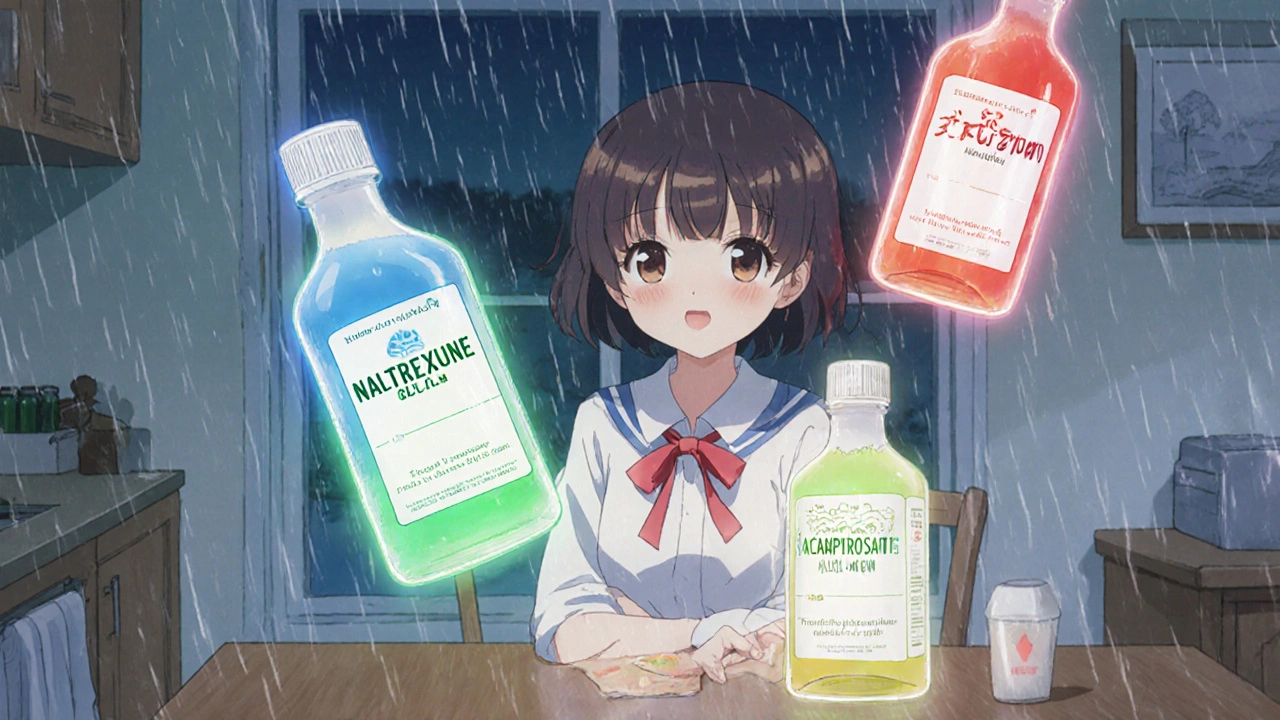

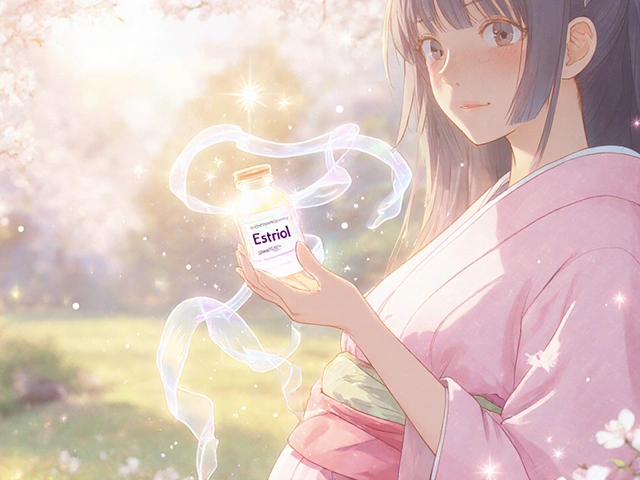
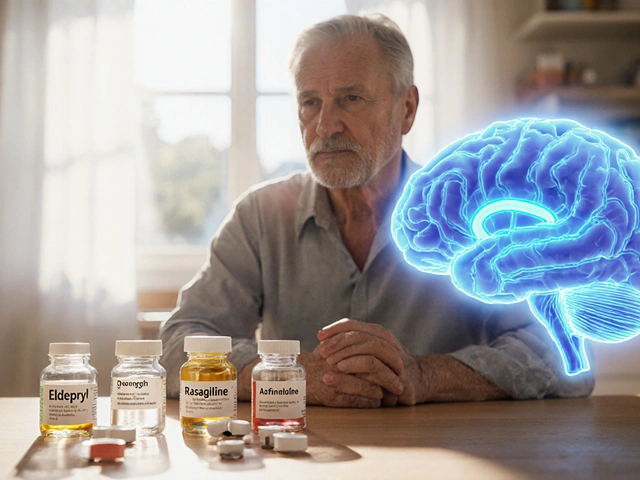
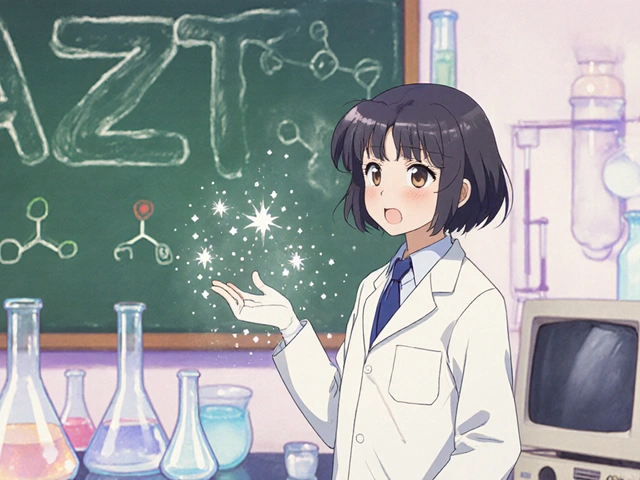


9 Comments
Bailey Sheppard
November 18, 2025 AT 11:35This is one of the clearest breakdowns of AUD meds I’ve ever read. No fluff, just facts. I wish more doctors talked like this instead of pushing therapy alone.
Girish Pai
November 20, 2025 AT 03:38India has been using naltrexone in rural clinics for years with surprising success. The real issue isn’t the drug-it’s the lack of infrastructure. We don’t need fancy brain scans, we need trained ASHA workers handing out pills and tracking adherence. Stop overcomplicating it.
Kristi Joy
November 21, 2025 AT 20:28I’ve seen so many people quit because they thought meds meant they were weak. This post reminds me of my cousin who took acamprosate for 18 months-she didn’t ‘cure’ herself, she just gave her brain time to heal. That’s not weakness. That’s wisdom.
Hal Nicholas
November 22, 2025 AT 11:45Let’s be real-most people who take these meds are just looking for a chemical crutch. They don’t want to face their trauma, their shame, their emptiness. Pills won’t fix that. Only hard, ugly work will. And most people aren’t ready for that.
Louie Amour
November 24, 2025 AT 00:58Did you know gabapentin is literally being prescribed like candy now? It’s not even FDA-approved for AUD. This is pharmaceutical malpractice disguised as innovation. You’re not treating addiction-you’re just swapping one dependency for another. Wake up.
Kristina Williams
November 24, 2025 AT 18:16Big Pharma paid off the FDA to approve these drugs. They don’t want you cured-they want you on them forever. That’s why they push the ‘long-term use’ nonsense. Your liver doesn’t need naltrexone. It needs detox, not chemicals.
Shilpi Tiwari
November 25, 2025 AT 06:22Interesting that acamprosate’s mechanism targets glutamate-GABA imbalance. That’s the same pathway affected in post-withdrawal anxiety disorders. The 2023 meta-analysis by Chatterjee et al. showed a 41% reduction in craving scores with sustained use-especially in patients with elevated baseline cortisol. Still, adherence remains the bottleneck.
Christine Eslinger
November 27, 2025 AT 03:10Medication isn’t the goal-it’s the bridge. You don’t stop taking blood pressure meds because your numbers improved. You stop when your body’s healed enough to maintain balance on its own. AUD is no different. The brain rewires slowly. These drugs give it the space to do that without being drowned in cravings. It’s not magic. It’s medicine.
And yes, gabapentin is a gift for people with liver damage. It’s not a crutch-it’s a lifeline. I’ve watched patients go from bedridden to holding jobs because they finally got the right support. Shame on us for calling it ‘cheating’.
The real tragedy isn’t the stigma-it’s the doctors who don’t know how to talk about this. You wouldn’t tell a diabetic to ‘just eat less sugar’ and call it a day. Why do we do it with alcohol?
Denny Sucipto
November 28, 2025 AT 13:27My brother took naltrexone for six months. Said it didn’t make him feel anything-good or bad. Just… quiet. Like the noise inside his head finally turned down. He didn’t get ‘fixed.’ He just got to breathe long enough to figure out who he was without the bottle. That’s worth more than any ‘cure.’